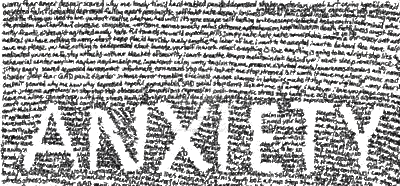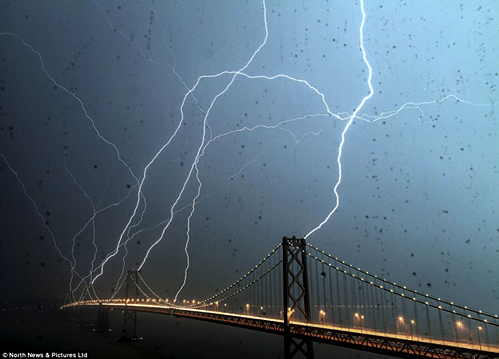Notes from a talk by Michael Stone at Centre of Gravity on July 17, 2012 on day 9 of a 12-day intensive.
With no hindrance in the mind.
No hindrance, therefore no fear.
Far beyond deluded thoughts, this is Nirvana.
Welcome to nirvana
We’re all practicing in nirvana right now, it’s hard to recognize, but this is it. The word nirvana comes from the Pali term “nibbana”, it’s a cooking term that refers to the moment when you take a pot off a flame. All of us are starting to get to know this in our practice. Sometimes we don’t recognize we’re on fire, or sometimes situations are giving off a lot of heat and we’re just trying not to get burned. How to really love and get burned and keep going? To be grateful for the fact that we’re still alive. All of us might have elected to become numb, or checked out when the fires seemed too much. But having a practice means being able to know what it’s like to be on fire and then have this practice to work on it. This is how we deepen our lives.
Red Pine translates “no hindrance in the mind” as “without walls of the mind” in other words, fearlessness. It takes a lot of energy to keep our walls alive.
Beads
Hakuin’s commentary on the Heart Sutra
Tell us you’ve discovered greed and anger in Saints, but don’t
Give us that stuff about Bodhisattvas depending on Wisdom.
If you see a single thing around to depend on,
That’s not “unhindered” – he’s tied in chains.
Bodhisattva and Prajna are essentially the same,
Like beads rolling on a tray, sudden, ready, uninhibited.
He’s neither worldly nor saintly, stupid nor wise –
What a shame, when you draw a snake, to add a leg.
Wisdom
He’s saying that wisdom is not a characteristic of the bodhisattva, the bodhisattva is wisdom. The impulse to serve, the action of serving, is already wisdom. Wisdom equals service to others. To do something with your knowledge.
“What a shame, when you draw a snake, to add a leg.” What a shame to sit here listening to sound in meditation, and add thoughts. Not being here often means we’re anticipating the future. To allow our mind to orient itself to the future. When we anticipate future pain, we’re caught in fear. When we can be present with fear, we can find energy in fear that frees us. If you don’t have fear you’re not risking enough.
Kiss
I remember a woman who used to practice at Centre of Gravity, she was part of another group that required celibacy as one of the conditions for a spiritual path. Then after thirty years she left that tradition and fell in love with a woman. But she didn’t like the way this woman kissed her. She decided she would end the relationship. She was just learning that sexual energy could be OK, but to say that she didn’t like the other person’s kissing felt too risky.
Sometimes we can live in a sort of purity, but then something gets left out and we have to remember that no matter how much we’re facing we’re always leaving something out. We need to take a risk to try something new and have to know our walls are so strong.
Our nervous system is triggered to respond with fight or flight, or if you’re a woman: tend and befriend. Sometimes our fear can trick us into believing it’s who we are, we become so attached to it, so overly identified with it. A certain spectrum of fear is healthy – a rabbit that has no fear is a dead rabbit – but when fear tricks us into states of restlessness it can motivate unskillful actions, particularly when we can’t sit with our discomfort. Aggressive nations are nations that can’t meet their fear. Aggressive people are people who can’t meet their fear.
I was reading an article recently about the prison system, and many of the inmates have a pretty strong bullshit detector, you need one in order to survive. So the writer arrives and is met with a group of guys, one of whom stands head and shoulders above the rest, a truly terrifying-looking dude. They lock eyes, and finally the writer says, “You scare me.” The leader puts his arm around the writer and says, “You’re OK.” Most of us would be scared, and might act out of that fear. Can we do this instead, stay inside our fear, look at the part of us that is afraid and lock eyes and say: you scare me.
Addict
Our unfaced fears are responsible for ravaging the earth: the endless drilling for oil in increasingly precarious ecosystems, the Alberta Tar Sands debacle. These are risks only an addict would take when supplies are running low. We live in a culture that has to develop creativity to deal with our fear.
Fear is a trance state, being in fear is like being in a trance. Etymologically it comes from the root “to strangle”. We’re dampening our energies by constricting ourselves. It also means: to lie in wait.
Japanese saying: fear is only as deep as your mind allows.
In practice we’re not trying to shut down sensation. We’re trying to ease the storyteller, to stop projecting into the future, or leaning back into the past, and to allow whatever’s coming up right now to be there. Fear stops us from showing up.
5 Fears
The Buddha listed five fears. The first is the fear of death. This isn’t the fear of “I’m going to die” but that the “I” is going to die. It’s not the bodily expiry date, but that the sense of me that I’m constantly inventing and sculpting is going to pass away. The second is fear of illness. The third is fear of losing your mind. When we sit we’re a little closer to insanity. Closer to a state of dreams, where the logical structures collapse. It’s healthier for your sanity because you learn to embrace your insanity. For people who have breakdowns – there’s something they haven’t been paying attention to and it pushes through. A daily sitting practice brings us closer to the irrational dream state, the image world of insanity – we get to know it. The fourth fear is the fear of losing your livelihood. The fifth is the fear of public speaking.
Dalai Lama
Someone asked the Dalai Lama: what’s the best way to work with fear? The Dalai Lama replied that if you have some pain and you can do something about it, then do something about it. And if you have some pain and you can’t do anything about it, don’t do anything about it.
How to work with deep fear? When you’re really feeling fear, try taking on other people’s fear as well, and your fear will increase, but will become less personal, and then it will pass. Start meditating on everyone you know who is scared. Breathe in their fear. Fear paralyzes us because we identify with it. Perhaps we can develop a practice around fear to spread our identification across different people’s fears.
Patanjali II, 43: As intense discipline burns up impurities, the body and its senses become more refined.
Mark Twain: “Some of the worst things in my life never happened.” I would add: most of what I think of as my life never happened.
Hafiz: Fear is the cheapest room in the house. I would like to see you living in better conditions.
Knowing the Knowing
In a sit you can go from extreme bliss to extreme fear. What’s interesting is not to know the bliss or the fear – but to look at the mind that knows. To see that the knowing is stable. When we’re first mediating we can see the object arising, perhaps it’s the fear arising. In the second maturation we fully enter into the sensation, we become the fear. In the third maturation, after you can fully be in what you feel, you can look at the consciousness that’s knowing the feeling. As the Dalai Lama asks: “Who is knowing?” Instead of looking at the object – look at the knowing. You’ll find that knowing doesn’t take the shape of fear or loss – it’s like a mirror. Joseph Goldstein liked to say, “Knowing is the openness of an open window.” Knowing doesn’t take the shape of fear the way the ego does.
It’s also good to know when things are too much and you have to find your stability. Practicing doesn’t mean standing next to the fire all day. There are some days when practice means staying away from the fire, and taking care of yourself. There are some times when you have to say: I’m not ready for more right now, I can’t sit with this feeling, it’s too painful. Better go have some more ice cream. Some days your practice is loving ice cream.
Sometimes, when animals in the wild are traumatized they will run off to be alone and shake themselves until their nervous system re-organizes and their breath comes back. For humans, a traumatic event can happen to your body, but your psyche can’t process it so you repeat it. When that kind of fear shows up you often need someone else to be able to open to that experience slowly, you need someone else to be able to hold you. So that you can metabolize what you couldn’t feel. Mindfulness therapy has sometimes been described as a re-parenting, giving you a second chance.
Nirvana is fearlessness. When you can hold the energy of fear and respond creatively. In nirvana there is still fear but one can respond. And there’s a trust in the form of these ancient practices that when the shadows come up, as they must, the practice will take care of them. Perhaps we’re an alternating current between nirvana (ideals of practice) and samsara (what it’s really like in this body).
Grooves
Samskaras are deep cultural, personal, psychological, environmental, genetic, physical, grooves. What we’re trying to learn in practice is how to have a relationship with these patterns, so that we’re curious, instead of being swept away by them. The patterns that we know about aren’t usually the big problem, the big problem patterns are the ones we don’t know about, and we find out about these in relationship. Has anyone ever noticed this?





